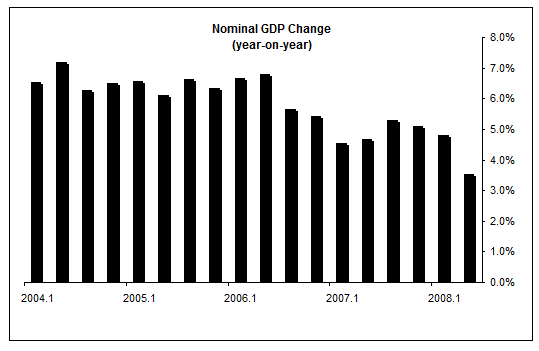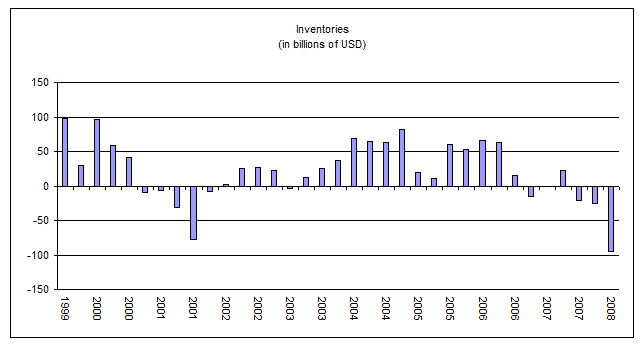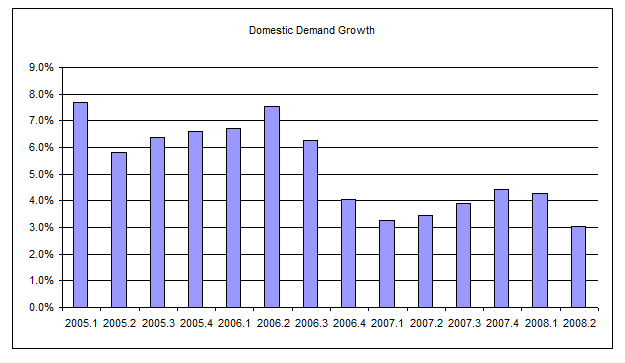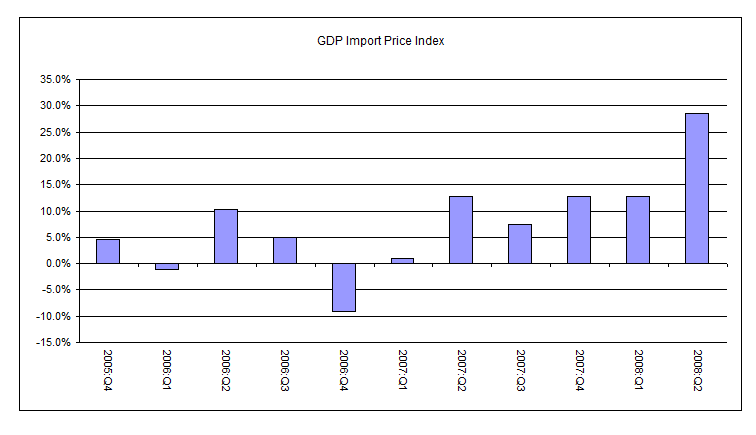A few more quick thoughts on GDP
Looking more closely at the data on U.S. GDP, a number of things emerge. First, I should add that the GDP deflator does not include import prices. So, one good reason it was so low last quarter is because it didn’t factor in the 28% rise in import prices which includes the oil and gasoline and distillate stocks the U.S. imports (The U.S. does import final gasoline and distillate demand, see the EIA Weekly Petroleum Status Reports (pdf)).
Second, nominal GDP is what is really measured. Real GDP is measured via the GDP deflator which we know is a poor gauge of inflation. So let’s look at nominal numbers to exclude this effect. Remember, anything below 4% or so is especially weak in nominal terms. Below is the chart for nominal GDP.

What this chart reveals is that nominal GDP has been declining since 2006 in an environment of rising inflation, which really underscores the weakness of the U.S. economy.
The last point is that final domestic demand in the U.S. was weak. GDP as inflated because of exports and inventories. Inventories were especially interesting because there was a massive inventory purge of $95 billion in Q2.

If one strips out inventories and exports, final U.S. demand looks especially weak. Basically it grew q-o-q at an annual nominal rate of 1.8%. Below is a chart of the year-on-year growth rate. This adds back imports and subtracts exports and inventories.

The long and short is: this GDP report was MUCH weaker than the headline number implies.
Related posts
The GDP’s inflation metric is clearly bogus
GDP revisions are out
GDP Revisions
The revised GDP number: pure fiction
Are the government’s numbers for real?

Comments are closed.